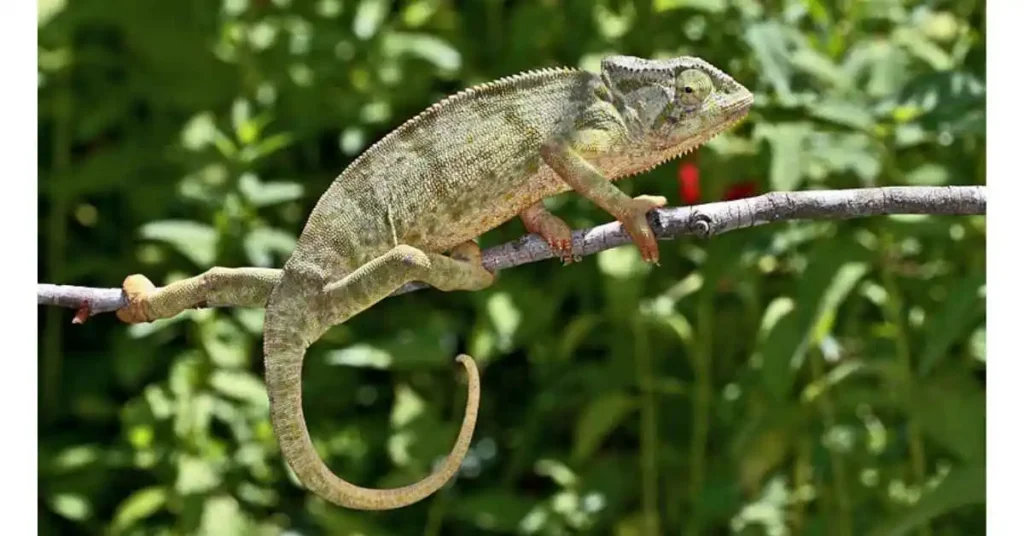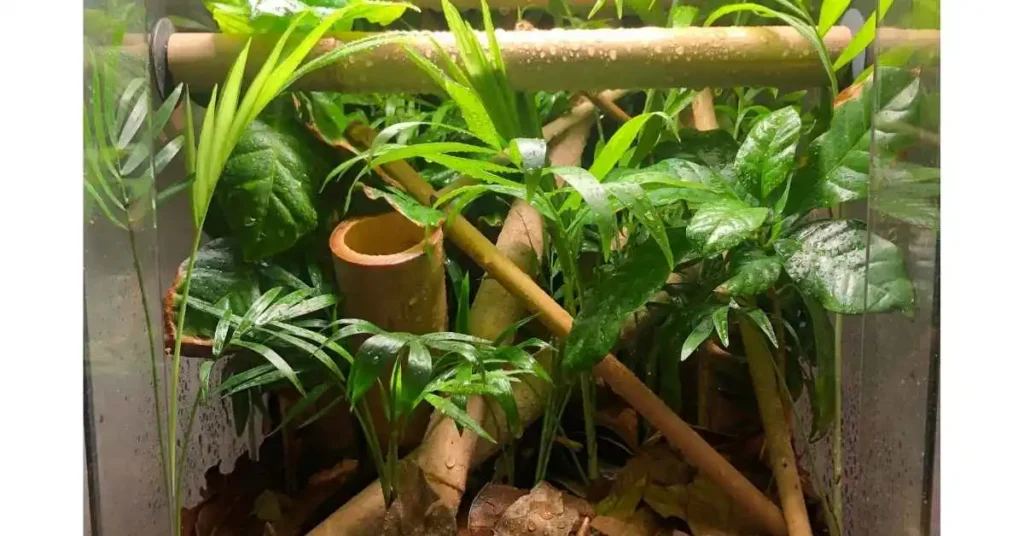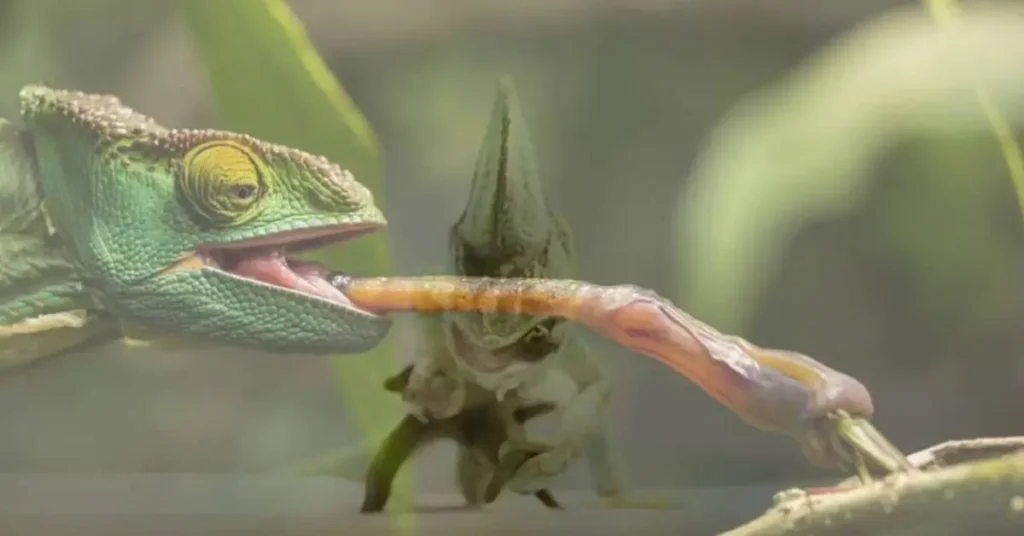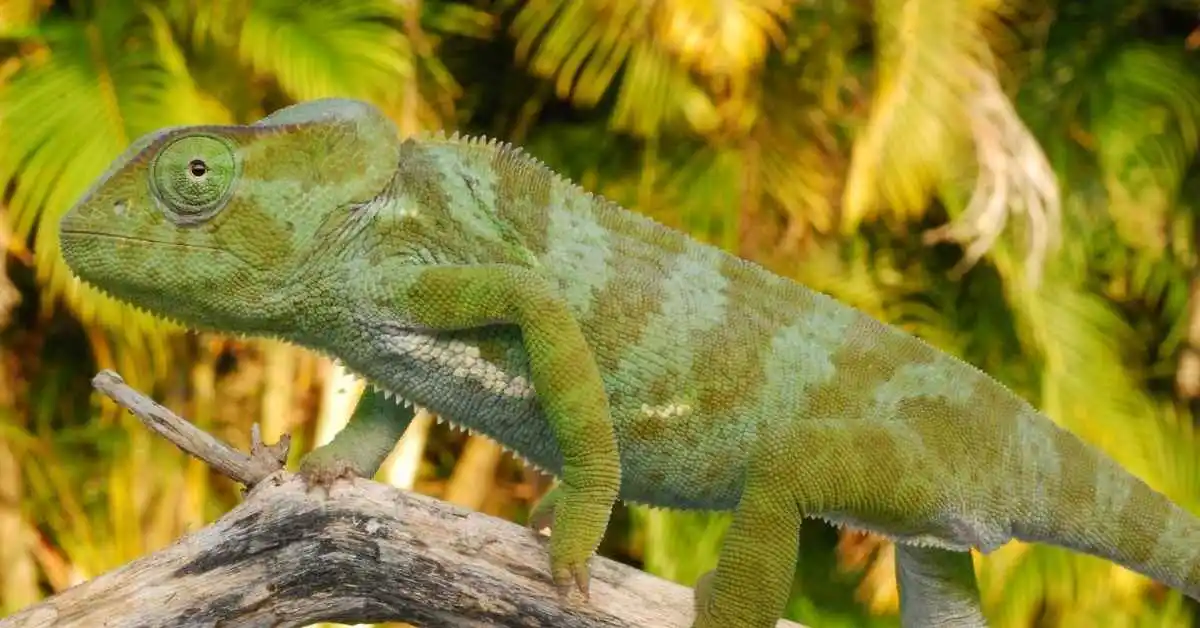Graceful Chameleon Care Guide
The Graceful Chameleon is an interesting and beautiful reptile. Naturally they have a special ability to change their body differently and emerge in the present environment. They are the most popular pets due to their gentle and calm behavior. They look very attractive through their vibrant color.
Graceful Chameleon’s body looks very unique because their body is elongated and slender. It is naturally found in them that they are very good at walking on trees due to their long body. They are also known by their scientific name Chamaeleo gracilis.
From this article, you will get all the information you need about it. So stay with us and take advantage of it.
Overview of Graceful Chameleon:
| Common Name | Graceful Chameleon |
| Scientific Name | Chamaeleo gracilis |
| Class | Reptilia |
| Food | Crickets, Locusts and Cockroaches |
| Weight | 100 to 180 grams |
| Size | 18 to 24 Inches |

Physical Characteristics of Graceful Chameleon:
- Their body looks slender and long. Due to its slenderness it moves with great ease and grace among the dense branches of trees.
- Along with their long body, they have long tails that are quite flexible, which they use to help balance their bodies and grasp branches.
- They have a natural characteristic of changing their color when they see the environment, which makes them emerge in the same environment.
- Their tongues are naturally long, which helps them catch insects or prey that are far away.
- Their feet are designed in such a way that they can easily hold onto trees while climbing.
Housing requirements and habitats of Graceful Chameleon:
Size of Enclosure:
Their cages should be sized according to their body size so that they can live comfortably and grow well. The minimum size of an adult enclosure is 18(l) x 18(w) x 36(h). If you raise the area of the enclosure for them then their enclosure size is 24(l) x 24 (w) x 48(h).
Temperature and Lighting:
Their enclosures must have basking areas and cooling areas to maintain temperature for them to survive. Basking lamps are used to provide their temperature and OVB light to compensate for their calcium deficiency. UVB Light strengthens their bones and joints, making them appear healthier. In basking areas their normal temperature is 70 to 80 F and during night time normal temperature is 65 to 70 F.
Humidity:
It is very important to maintain proper humidity levels for them in the enclosure. If the humidity level is not normal, they start to dehydrate, so use mist daily to prevent dehydration.
Substrate:
They require a lot of substrate in the enclosure as it keeps the moisture level normal. For them, use a simple substrate in the enclosure, such as reptile carpet or clay free soil. Avoid the sand and bark substrate because it is not suitable for them.

Behavior of Graceful Chameleon:
They are very good with their owners and prefer to live alone. They have the special feature of being able to hide and hunt from afar. Their tongue helps them to hunt without moving their heads. For them, the plant environment must provide and the plant environment helps them to overcome their anxiety. They have to be taken care of very carefully. Among them, the greatest feature is that it can change its color at any time. It is very popular among pets due to its calm nature and uniqueness.
Lifespan of Graceful Chameleon:
In Wild:
In the wild they face many environmental problems, difficulty in finding food and do not get proper medical treatment which makes their life short round about 2 to 3 years lifespan.
In captivity:
Their life is long due to proper care, a balanced diet and proper medical treatment which helps in increasing lifespan and enjoying life without facing any problem. Their lifespan is up to ten years.
Food and Diet of Graceful Chameleon:
Almost everyone needs food to survive in life. They mostly depend on a balanced diet. If they get improper food they may suffer from various diseases and health starts to drop. They are mostly insectivorous which depends on insects. Properly fed them every day especially adults.
- Cockroaches
- Spiders
- Fruit Flies
- Mealworms
- Roaches

Health Care Problems of Graceful Chameleon:
Respiratory Problems:
When there is poor ventilation, low humidity, and high or low temperature they start wheezing, take a breath by opening their mouth and lethargy showing problems in the respiratory system. To prevent this maintain the humidity level improve the ventilation in the enclosure and give medical treatment properly.
Obesity:
When they are overfed from their limit they start to suffer from obesity. Their body weight started to increase and they had difficulty walking. This often occurs when proper exercise is not given after feeding them. To prevent this eat normal food and do exercise daily.
Eye Problems:
When there is a poor humidity level in the enclosure and bad conditions, it can cause swallowing around the eyes. To prevent from this improve the conditions of the enclosure and maintain the humidity level properly.
Caring Tips for Graceful Chameleon:
- Try to use a large enclosure with good ventilation and plant branches to climb on.
- They should not be given an unbalanced diet so that they can avoid various diseases and develop well.
- Special attention should be paid to the cleanliness of their enclosure and they should be cleaned daily to avoid contracting various diseases.
- They should be handled with great care. Be very calm while handling it so that it is not subjected to any pressure.
- A good and clean incubator can keep them healthy.
Price and Cost of Graceful Chameleon:
Their price mostly depends on their size and age. Their average cost and price is $100 To $250.
| Age | Price |
| hatchlings | $40 to $80 |
| Juveniles | $50 to $150 |
| Adults | $$150 to $250 |
Conclusions:
Graceful Chameleon is mostly found in South Africa. They are unique due to their vibrant color and look very attractive. It is very unique in its calm behavior with its owner. Mostly they want to live alone. In this article you will get all types of information about it and we hope that it is useful for you.







